Overview
The benefits of high-capacity transmission infrastructure for energy projects are profound. This infrastructure plays a crucial role in enhancing efficiency, reliability, and cost-effectiveness in energy delivery. Evidence shows significant operational cost savings, improved grid resilience, and job creation linked to such infrastructure. These factors underscore its critical importance in the transition to sustainable energy solutions.
Consider the challenges faced in energy delivery today. The complexities of land acquisition, including legal and regulatory hurdles, can hinder progress. However, the implementation of high-capacity transmission infrastructure presents effective solutions to these issues.
By investing in this infrastructure, energy projects can not only improve operational efficiency but also contribute to a more resilient energy grid. The potential for job creation further highlights the socio-economic benefits of such initiatives.
In conclusion, embracing high-capacity transmission infrastructure is not just a strategic move; it is a necessary step towards a sustainable energy future. Act now to explore how these solutions can transform your energy projects and contribute to a more sustainable world.
Introduction
High-capacity transmission infrastructure is swiftly becoming a cornerstone of modern energy systems, delivering transformative benefits that extend far beyond mere efficiency. As the demand for reliable and sustainable energy sources intensifies, these advanced systems promise not only to reduce energy losses but also to facilitate the integration of renewable resources. This integration ultimately drives down costs for consumers. However, with such significant advantages arises a pressing question: How can energy providers effectively navigate the complexities of implementing high-capacity transmission solutions? They must maximize their potential while overcoming regulatory and logistical challenges.
The complexities of land acquisition, including legal and regulatory hurdles, present formidable obstacles. Energy providers must grapple with various issues, from securing the necessary permits to addressing community concerns. These challenges can impede progress and delay the deployment of essential infrastructure.
Nevertheless, the benefits of high-capacity transmission infrastructure are undeniable. By reducing energy losses and enabling the use of renewable sources, these systems not only enhance efficiency but also contribute to a more sustainable energy landscape. Energy providers must consider how to leverage these advantages while addressing the complexities that accompany implementation.
In conclusion, navigating the intricacies of high-capacity transmission solutions is crucial for energy providers aiming to thrive in an evolving market. The path forward requires a strategic approach to overcome the challenges and fully realize the potential of these transformative systems.
Harbinger Land | Comprehensive Solutions for Land Services in Energy Projects
Navigating the complexities of land acquisition for utility and construction projects can be daunting, often fraught with legal and regulatory challenges. Harbinger Land stands out by delivering extensive land services tailored to meet these demands. Their comprehensive offerings encompass:
- Site and right-of-way acquisition
- Title research
- GIS mapping
- Advanced data processing solutions
All designed to enhance operational efficiency.
Leveraging highly integrated GIS modeling services and AI-powered title research software, Harbinger Land significantly boosts efficiency and client satisfaction in land rights acquisition. Their document imaging solutions streamline title research and leasing processes, enabling title agents to complete their tasks effectively while minimizing costs.
The experienced team at Harbinger Land excels in assembling large groups swiftly to address project requirements. This capability guarantees prompt and precise services that cater to the unique needs of clients in the utilities sector, including natural gas firms and solar developers. By choosing Harbinger Land, you not only gain a partner with deep expertise but also a commitment to navigating the complexities of land services with confidence and precision.
Enhanced Energy Efficiency Through High-Capacity Transmission Infrastructure
High-capacity transmission infrastructure is essential for enhancing power efficiency, significantly reducing conveyance losses. By operating at elevated voltages, these systems minimize the current flowing through the lines, effectively decreasing resistive losses. In 2025, advancements in this area are expected to lead to a reduction in transfer losses by up to 20%, which could translate into substantial operational cost savings for utility providers. This efficiency not only lowers expenses for utilities but also translates into reduced electricity bills for consumers.
Take, for instance, the SunZia initiative, which utilizes high-voltage direct current (HVDC) technology. This project is designed to transmit renewable power over long distances while maintaining high efficiency, exemplifying the successful application of this technology. The initiative has the capacity to convey up to three gigawatts (3 GWs) of wind power, illustrating the scale of power flow and its impact on efficiency. As Tom Saager, Project Manager for SunZia West Converter Station, noted, 'Working together in every field of expertise — from wind farm generation to engineering, innovative designs, and the construction aspect — has been essential to delivering a successful renewable project.'
Moreover, the efficiency of electric power delivery typically exceeds 90%, underscoring the effectiveness of high-capacity systems in minimizing losses. Overall, the shift towards high-capacity transmission infrastructure is crucial for achieving a more efficient and sustainable power landscape.
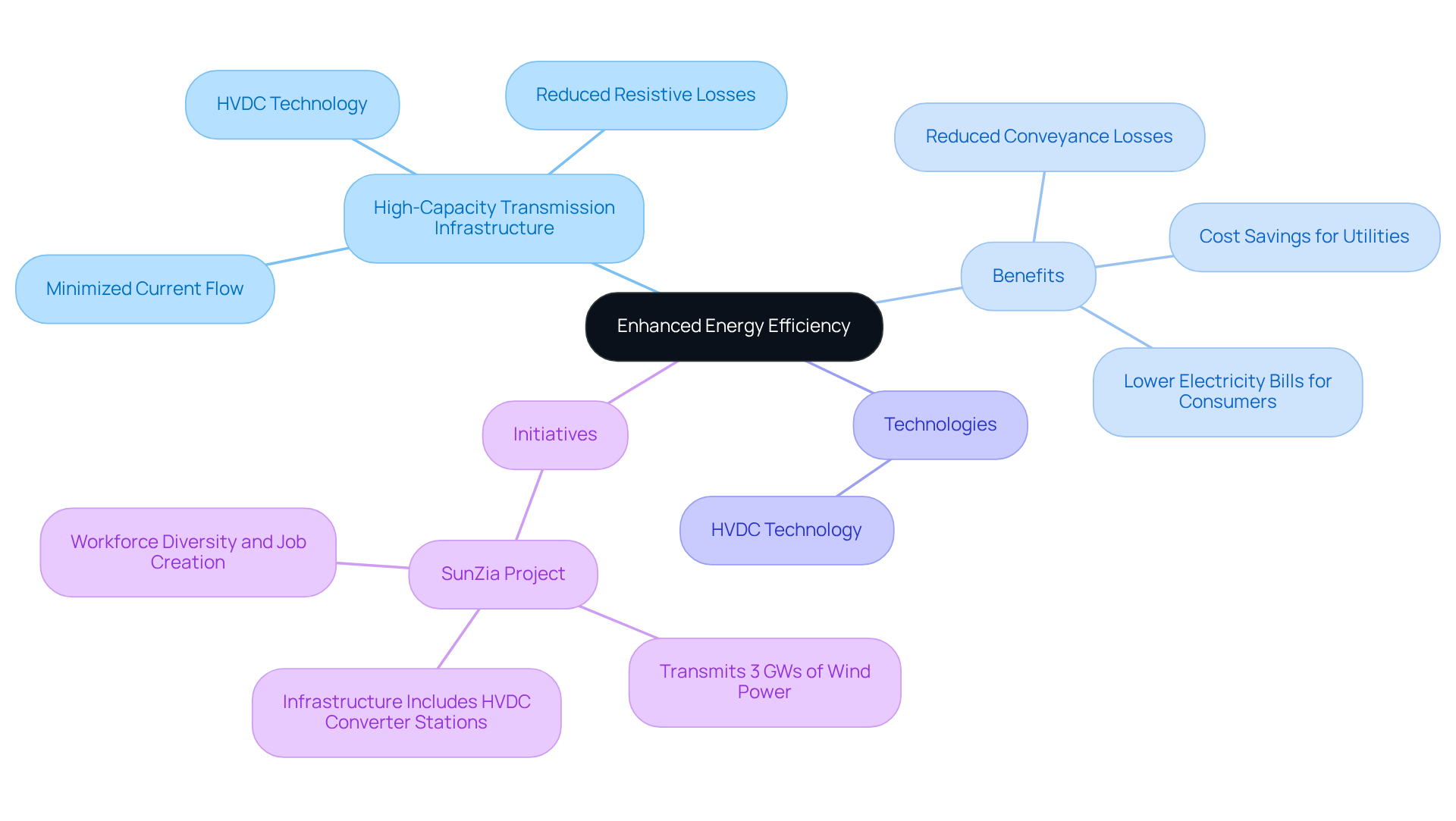
Cost Reduction for Energy Projects with High-Capacity Transmission Solutions
Investing in high-capacity transmission infrastructure presents a compelling opportunity for significant cost reductions in power projects. These systems enable the efficient transmission of electricity over long distances with minimal losses, allowing suppliers to tap into lower-cost generation sources. This capability not only reduces electricity costs for consumers but also improves the economic viability of renewable initiatives.
Consider the Grain Belt Express project, which is expected to generate $52 billion in utility cost savings over 15 years, while also creating over 4,000 jobs during its construction phase. Furthermore, it will contribute an additional 5,000 megawatts to the high-capacity transmission infrastructure for U.S. energy delivery. Research indicates that new power lines can save mid-Atlantic customers approximately $1.35 billion over 20 years by connecting high-cost regions to more economical energy sources.
Richard W. Caperton, Director of Clean Energy Investment, underscores the importance of a robust electricity distribution network for economic development. Investments in high-capacity transmission infrastructure not only enhance grid reliability but also stimulate local economies, highlighting the substantial economic benefits associated with such delivery solutions.
In conclusion, the strategic implementation of high-capacity transmission infrastructure is not merely a technical upgrade; it is a vital step towards fostering economic growth and sustainability in the energy sector.
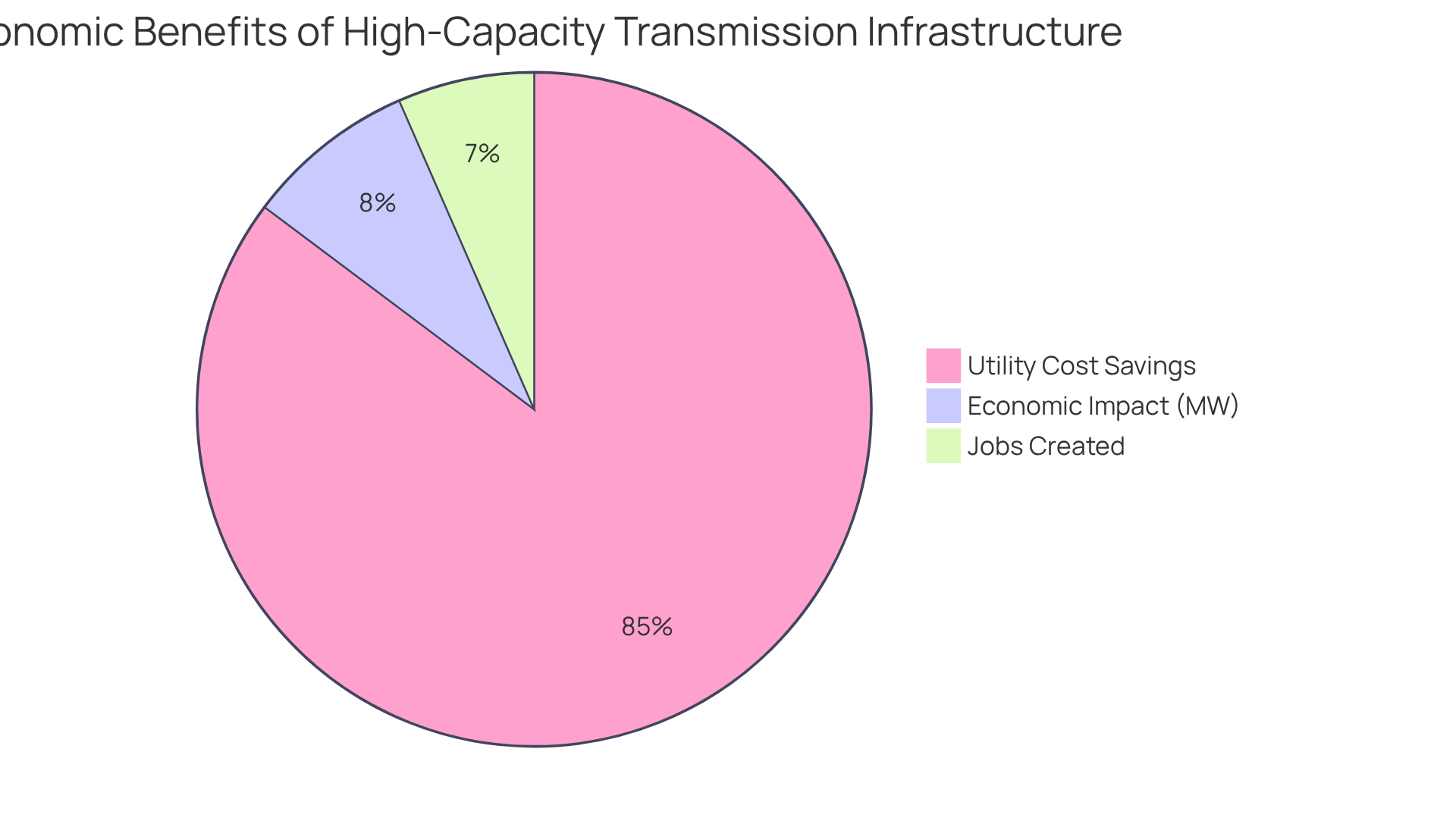
Increased Reliability of Energy Supply with High-Capacity Infrastructure
High-capacity transmission infrastructure significantly enhances the reliability of power supply, establishing a robust framework for electricity distribution. This framework not only facilitates better load distribution but also reduces the risk of disruptions. As a result, power suppliers can effectively meet consumer demand, even during peak usage periods. Moreover, the high-capacity transmission infrastructure encourages the integration of diverse power sources, further stabilizing the grid.
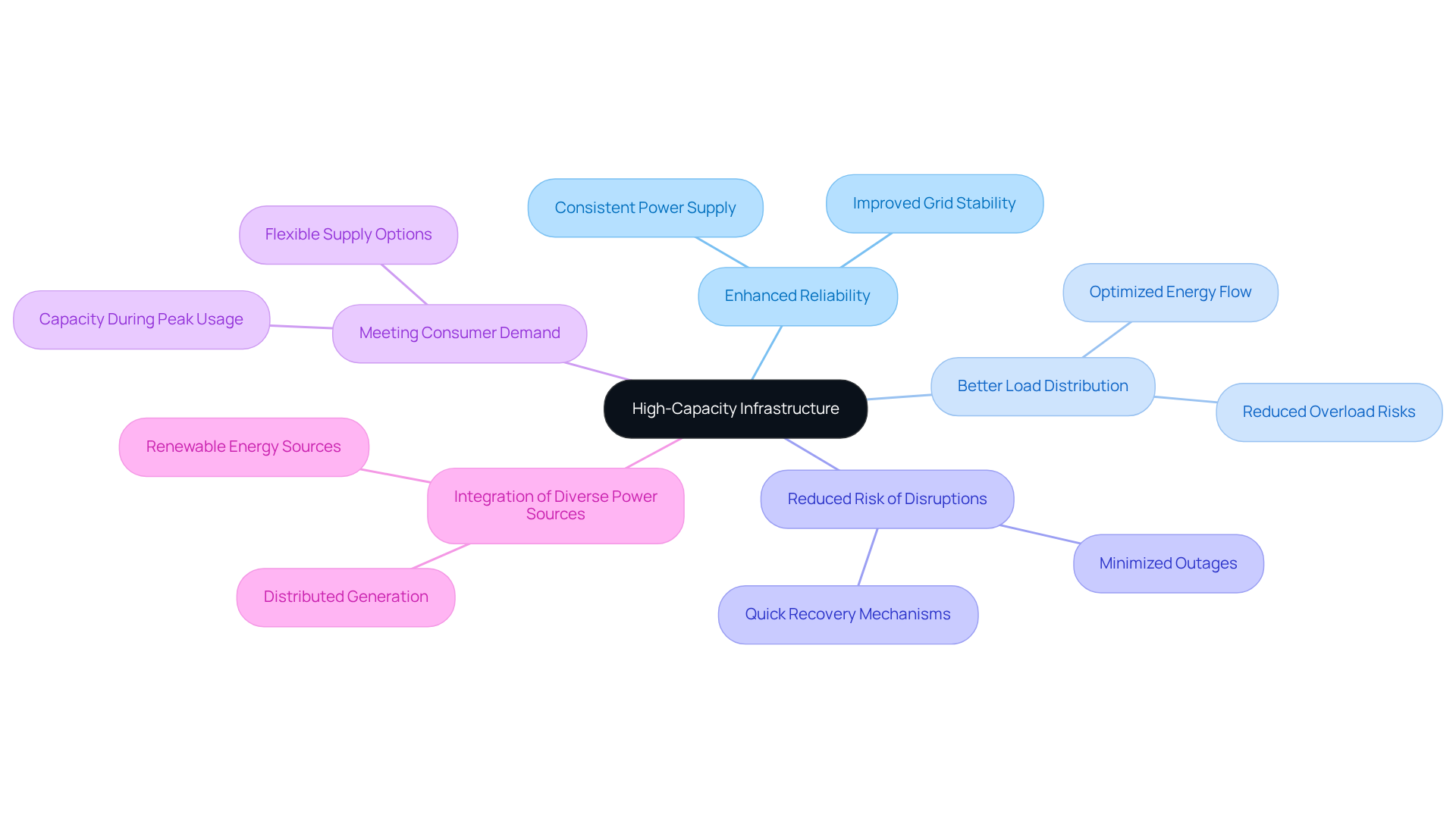
Facilitation of Renewable Energy Integration via High-Capacity Transmission
The integration of renewable power sources, such as wind and solar, into the grid is facilitated by high-capacity transmission infrastructure. These systems enable the transport of electricity generated in remote locations to urban centers, where demand is highest, effectively overcoming geographical limitations. This integration is vital for advancing toward a cleaner power future and achieving renewable resource objectives.
Consider the challenges posed by traditional energy distribution methods: they often fail to efficiently connect renewable energy sources with urban demand. The complexities of land acquisition, including legal and regulatory hurdles, can further complicate these efforts. However, high-capacity transmission infrastructure provides a robust solution, ensuring that renewable energy can reach consumers without delay.
The benefits of these systems are clear. They not only enhance grid reliability but also support the transition to sustainable energy by maximizing the use of renewable resources. As we strive for a greener future, investing in high-capacity transmission infrastructure becomes a critical action step.
In summary, the integration of high-capacity transmission infrastructure is not just a technical necessity; it is a strategic imperative for achieving our renewable energy goals. By addressing the challenges of energy distribution, we can pave the way for a sustainable and resilient energy landscape.
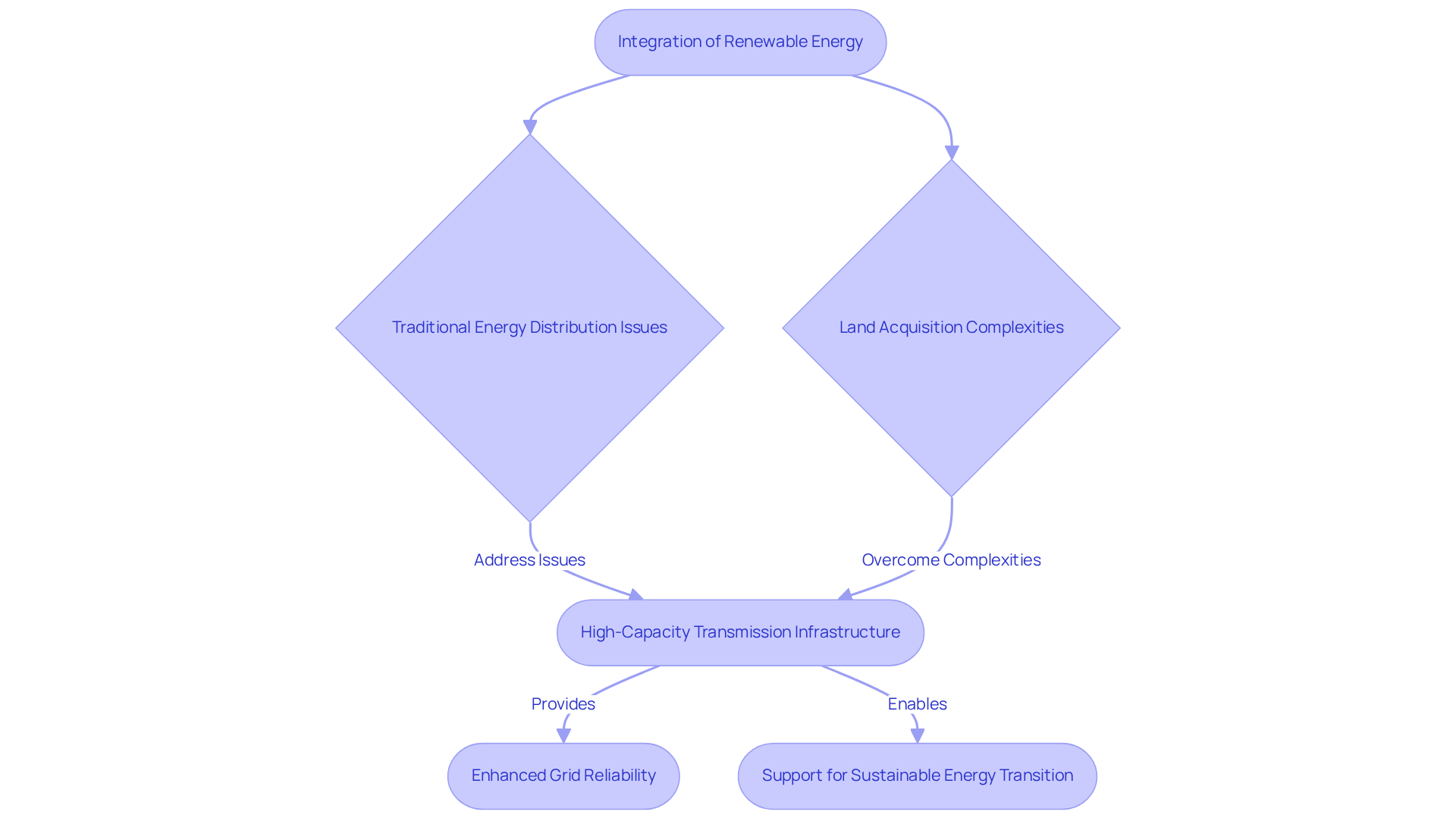
Scalability of Energy Solutions with High-Capacity Transmission Infrastructure
High-capacity transmission infrastructure plays a pivotal role in the scalability of power solutions. They enable the straightforward incorporation of new generation sources as demand increases, which is essential for energy providers aiming to expand their operations efficiently. This flexibility allows companies to adapt to market changes and consumer needs without incurring significant delays or additional costs. By investing in high-capacity transmission infrastructure, energy providers can navigate the complexities of growth with greater ease, ensuring they remain competitive in a rapidly evolving landscape.
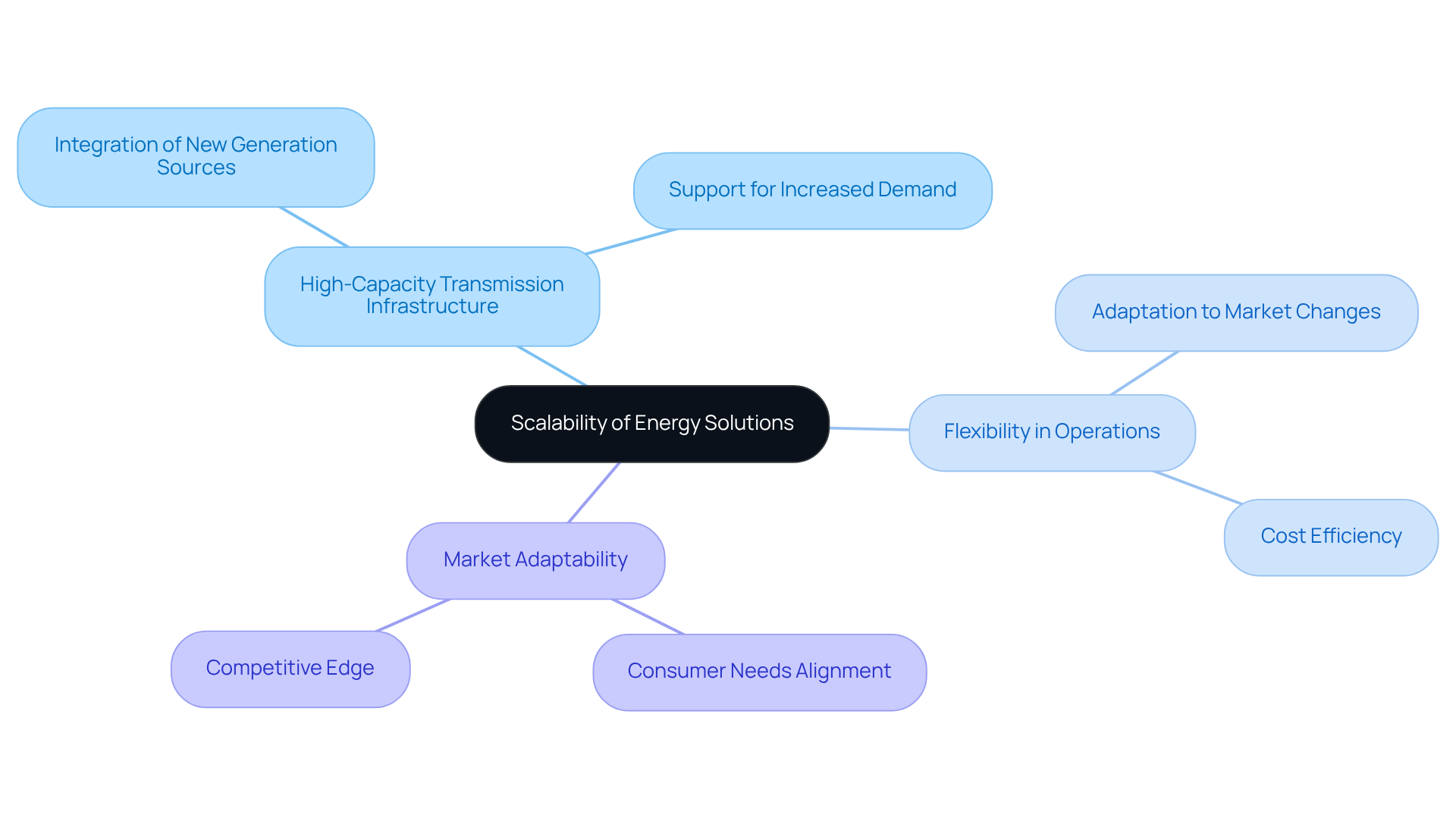
Environmental Benefits of High-Capacity Transmission Infrastructure
High-capacity transmission infrastructure presents significant environmental advantages, particularly in terms of reducing greenhouse gas emissions and minimizing land use impacts. High-capacity transmission infrastructure plays a pivotal role in enabling the transport of electricity generated from renewable sources, which is essential for decreasing dependence on fossil fuels. The National Planning Study indicates that enhancing capacity could lead to substantial reductions in carbon emissions, potentially conserving billions of metric tons by 2050. Furthermore, high-capacity transmission infrastructure and modern transmission technologies are engineered to lessen land disruption and protect natural habitats, ensuring alignment with environmental sustainability objectives. This strategy not only bolsters grid reliability but also facilitates the integration of renewable energy resources, supported by high-capacity transmission infrastructure, paving the way for a cleaner energy future.
As Directors of Land Acquisition, it is crucial to advocate for these infrastructure improvements within your initiatives, as they significantly contribute to achieving sustainability goals. Additionally, collaborating with Harbinger Land can streamline the acquisition process through our comprehensive services, which include:
- Lease negotiation
- Advanced GIS mapping
- AI-powered title research
This ensures efficient lease acquisition and thorough land services that align with your sustainability objectives.
To maximize these advantages, consider engaging with Harbinger Land to elevate your project outcomes.
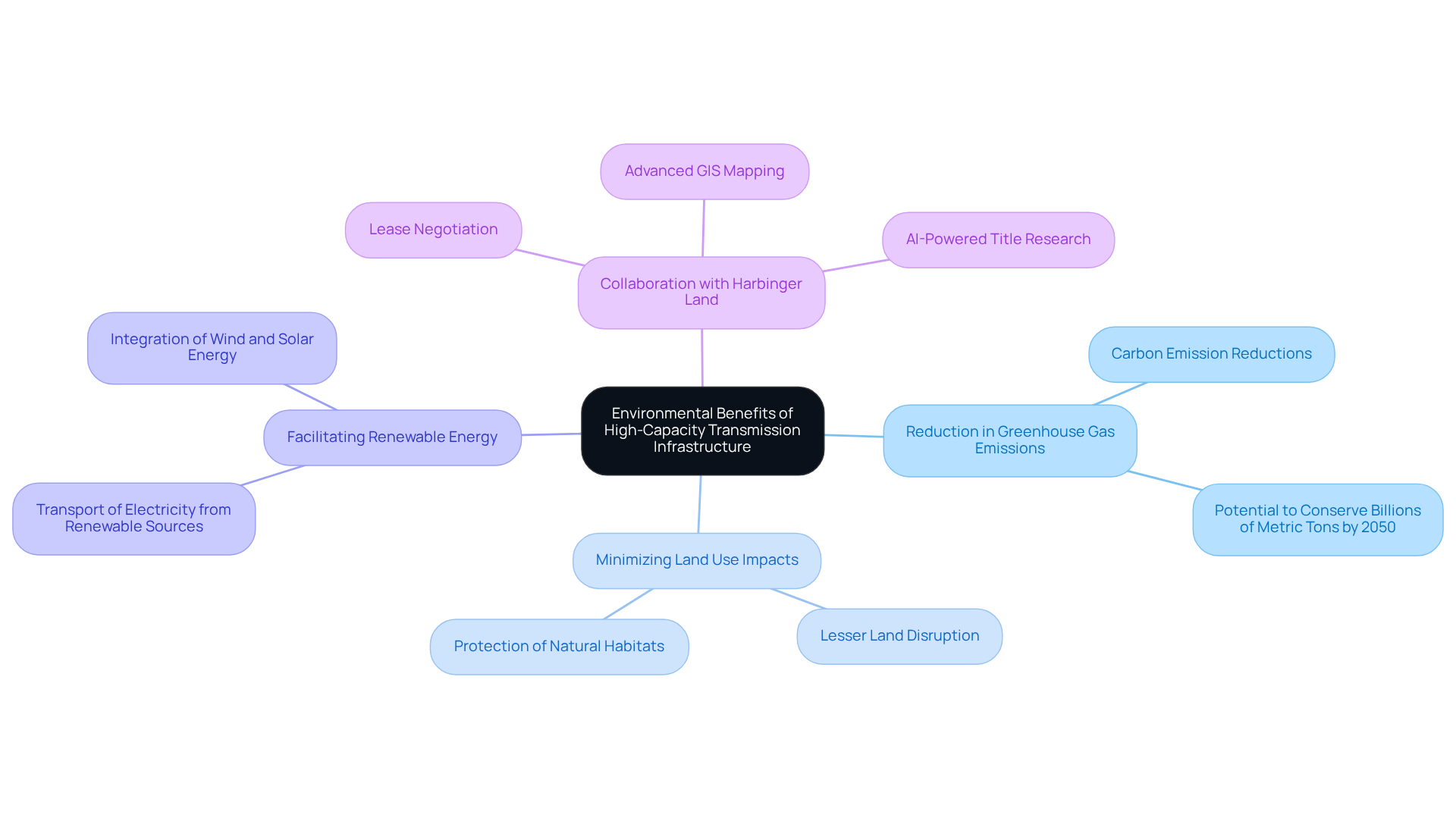
Enhanced Grid Resilience Through High-Capacity Transmission Solutions
High-capacity transmission infrastructure significantly enhances grid resilience by offering multiple pathways for electricity flow. This redundancy is vital; should one line be compromised, others can maintain the supply, effectively reducing the risk of widespread outages. Additionally, these systems are meticulously designed to withstand extreme weather events, underscoring their importance in maintaining energy reliability amid the challenges posed by climate change.
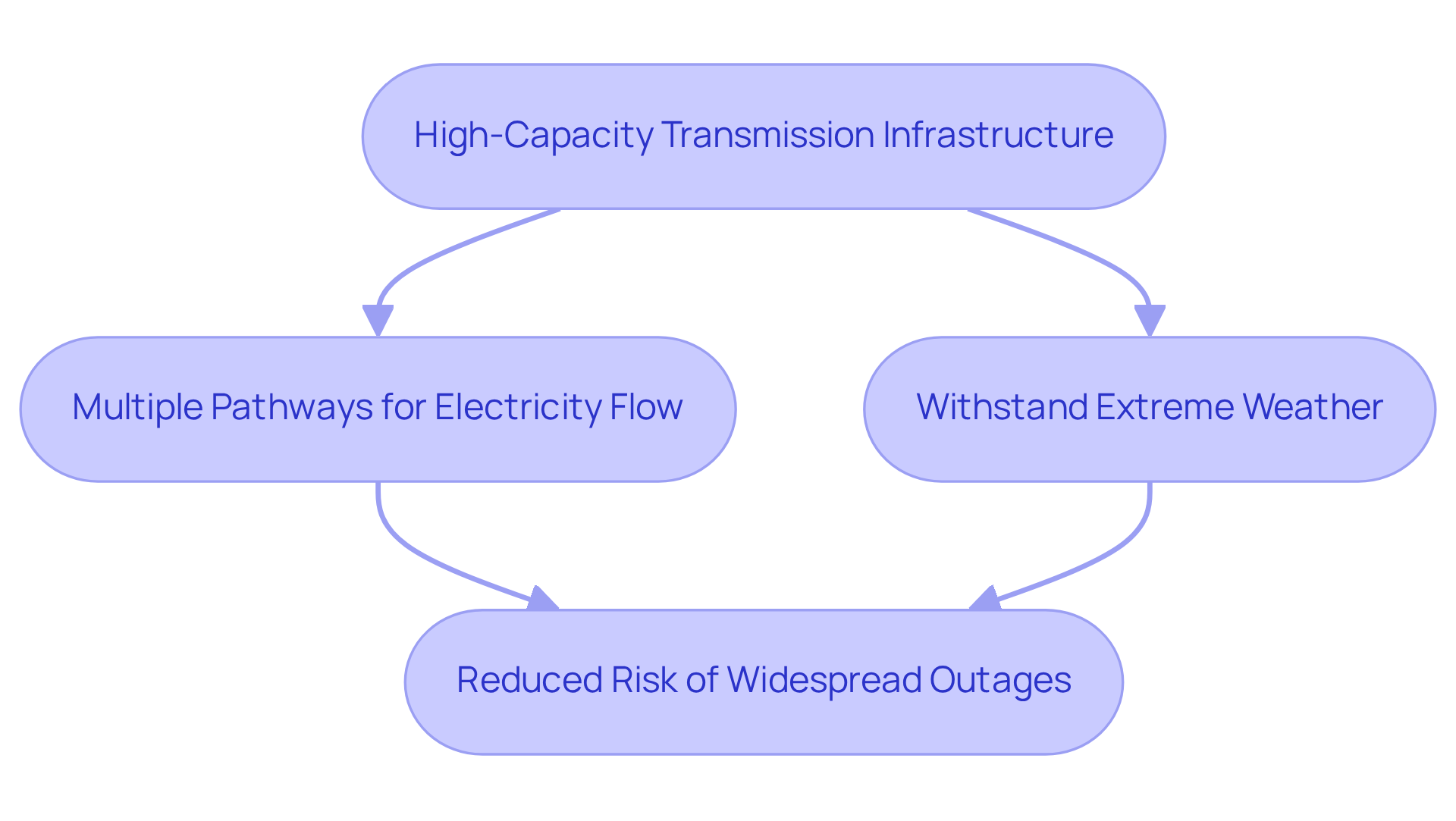
Job Creation Opportunities from High-Capacity Transmission Infrastructure
Investing in high-capacity transmission infrastructure generates substantial job opportunities across various sectors, including construction, engineering, maintenance, and operations. Recent estimates suggest that the building of new power lines could generate approximately 1,240,000 jobs, with around 600,000 originating from investment in infrastructure and an additional 640,000 from wind and solar installation. This surge of jobs not only strengthens local economies but also aids workforce development programs designed to prepare individuals with the essential skills for the sector.
For example, the TransWest Express Project is anticipated to generate more than 1,000 jobs during its construction stage and offer 3,000 megawatts of new capacity. This initiative aids the shift to a clean power economy by improving the capacity for renewable resources. Secretary of Energy Jennifer Granholm stated, "The TransWest Express Project will be crucial in our nation’s power security, ensuring that domestically produced clean power can form the backbone of our electric grid as we reconstruct a stronger, more resilient network."
Such initiatives illustrate the essential function of high-capacity transmission infrastructure in promoting economic advancement and job creation. Ultimately, they contribute to a more robust power system, addressing the pressing need for sustainable energy solutions.
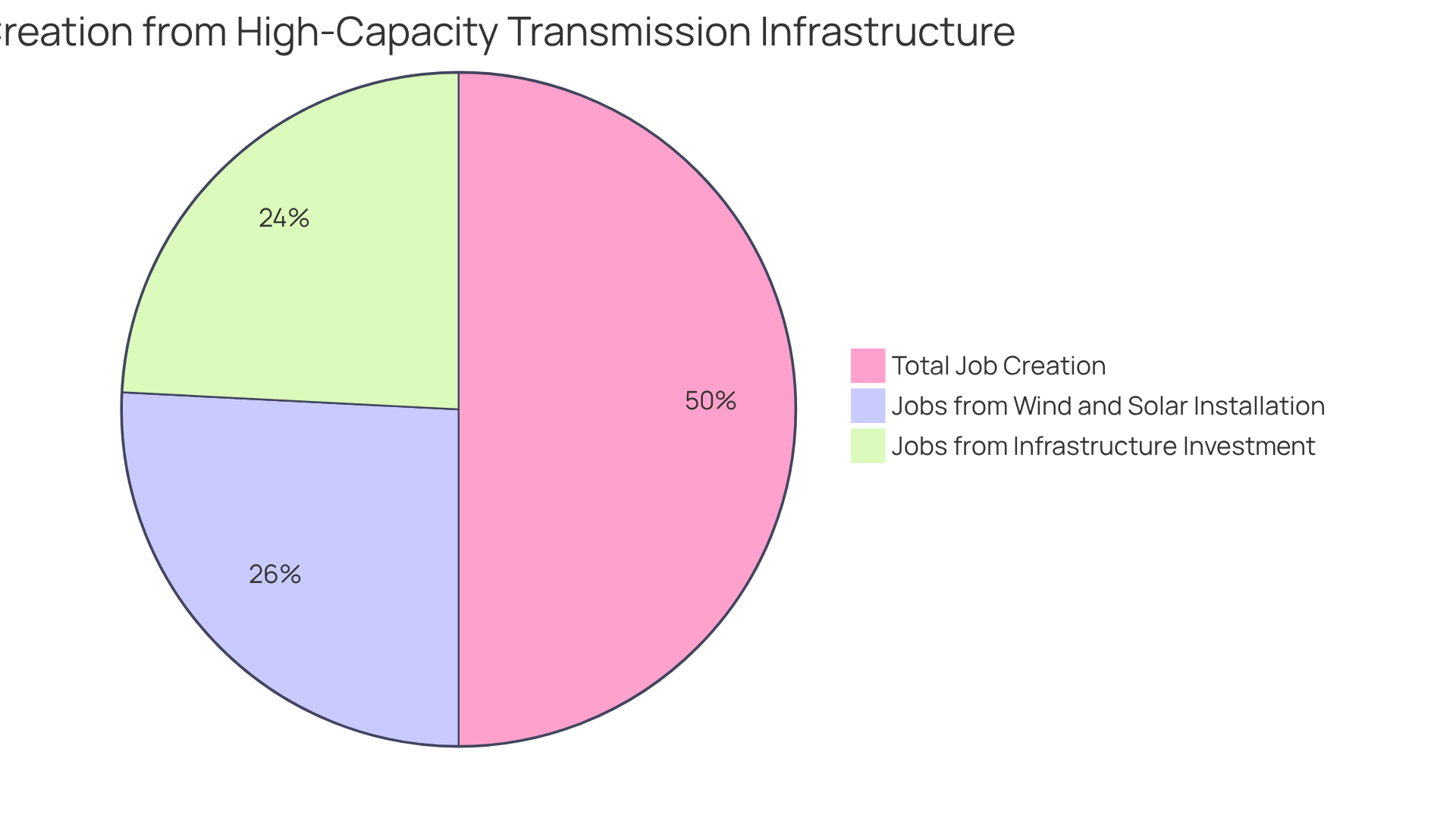
Regulatory Compliance Support Through High-Capacity Transmission Infrastructure
High-capacity transmission infrastructure plays a pivotal role in supporting regulatory compliance by providing a robust framework for meeting environmental and safety standards. Utility providers face significant challenges in land acquisition, including legal and regulatory hurdles. By leveraging Harbinger Land's expertise in site and right-of-way acquisitions, they can effectively negotiate and secure the necessary leases and easements for distributed resources (DER) and infrastructure development.
Our highly integrated GIS modeling services streamline this complex process, significantly reducing both time and costs. This ensures that projects align seamlessly with federal and state regulations. This proactive approach, rooted in our specialized services, not only mitigates risks but also enhances the overall sustainability of energy operations.
Are you ready to transform your approach to land acquisition? Let us help you navigate these complexities with confidence.
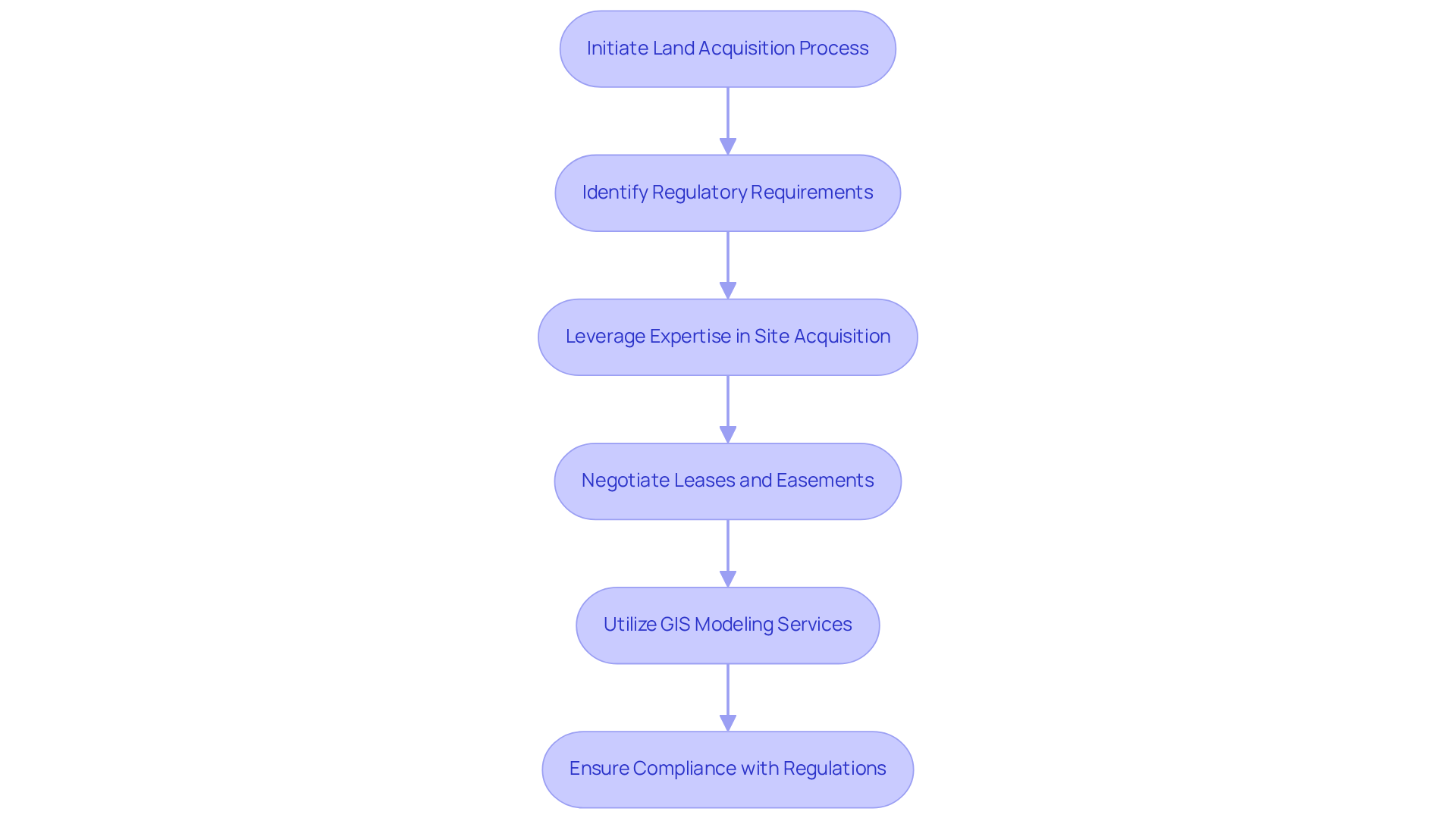
Conclusion
High-capacity transmission infrastructure represents a pivotal advancement in modern energy systems, offering a multitude of benefits that extend well beyond mere operational efficiency. These systems are essential not only for reducing energy losses but also for integrating renewable resources into the power grid, thereby fostering a more sustainable energy landscape. As energy providers navigate the complexities of implementing these solutions, it is crucial to recognize the transformative potential they hold for the future of energy delivery.
Several key advantages of high-capacity transmission infrastructure stand out:
- Enhanced energy efficiency through reduced conveyance losses
- Significant cost savings for both utilities and consumers
- Improved reliability of energy supply
- Facilitation of renewable energy integration
Furthermore, the scalability of these systems allows energy providers to adapt to growing demands while also contributing to job creation and environmental sustainability. Initiatives like SunZia and Grain Belt Express illustrate the profound economic and operational impacts of investing in high-capacity transmission solutions.
Ultimately, the journey towards a more reliable, efficient, and sustainable energy future hinges on the strategic implementation of high-capacity transmission infrastructure. Energy providers are encouraged to embrace these advancements, leveraging comprehensive land services and regulatory support to overcome challenges. By doing so, they can not only enhance their operational capabilities but also play a significant role in shaping a cleaner and more resilient energy landscape for generations to come.
Frequently Asked Questions
What services does Harbinger Land provide for energy projects?
Harbinger Land offers comprehensive land services, including site and right-of-way acquisition, title research, GIS mapping, and advanced data processing solutions, all designed to enhance operational efficiency.
How does Harbinger Land improve efficiency in land rights acquisition?
Harbinger Land utilizes highly integrated GIS modeling services and AI-powered title research software, along with document imaging solutions, to streamline title research and leasing processes, thereby boosting efficiency and client satisfaction.
Who can benefit from Harbinger Land's services?
Clients in the utilities sector, including natural gas firms and solar developers, can benefit from Harbinger Land's expertise and commitment to navigating the complexities of land services.
What is the significance of high-capacity transmission infrastructure in energy efficiency?
High-capacity transmission infrastructure enhances power efficiency by reducing conveyance losses through elevated voltage operations, leading to substantial operational cost savings for utility providers and lower electricity bills for consumers.
Can you provide an example of a project utilizing high-capacity transmission technology?
The SunZia initiative uses high-voltage direct current (HVDC) technology to transmit renewable power over long distances efficiently, with the capacity to convey up to three gigawatts of wind power.
What economic benefits are associated with high-capacity transmission infrastructure?
Investments in high-capacity transmission infrastructure can lead to significant cost reductions, job creation, and enhanced grid reliability, ultimately stimulating local economies and improving the economic viability of renewable initiatives.
How much savings is projected from the Grain Belt Express project?
The Grain Belt Express project is expected to generate $52 billion in utility cost savings over 15 years and create over 4,000 jobs during its construction phase.
What impact do new power lines have on energy costs for consumers?
Research indicates that new power lines can save mid-Atlantic customers approximately $1.35 billion over 20 years by connecting high-cost regions to more economical energy sources.




